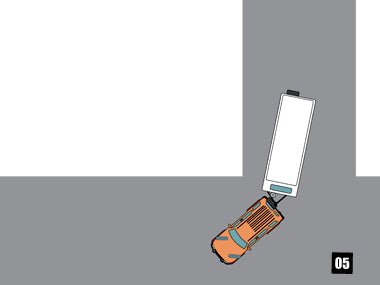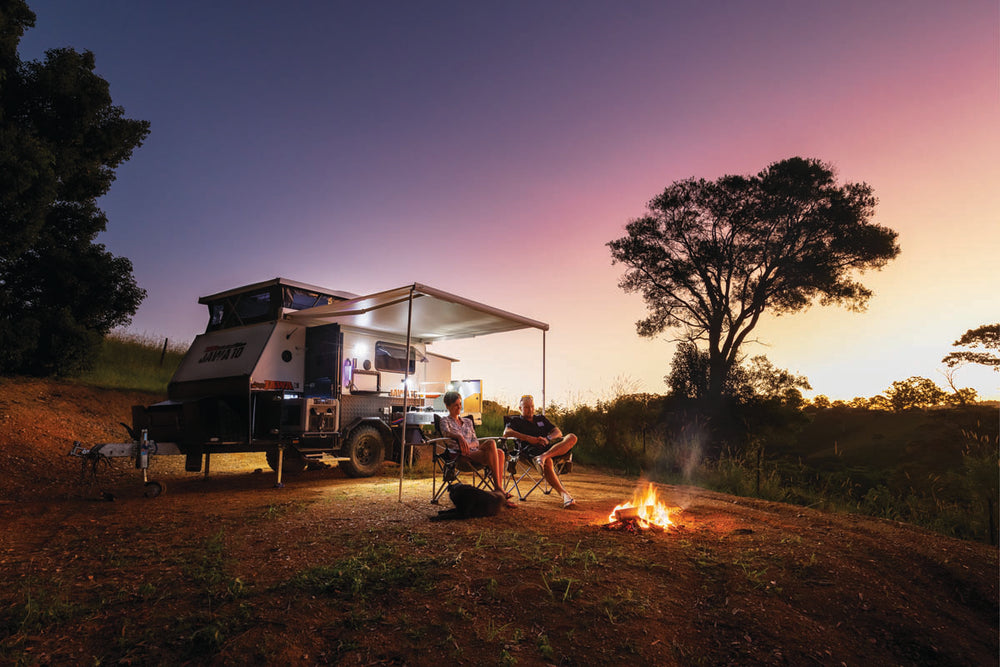Essential Guide to Reversing with a Trailer

DESPITE THE TREPIDATION felt by many newcomers to caravanning, backing a van into a specific location is a skill that is fairly easy to acquire. Practice, of course, helps.
Two skills are used simultaneously, and that can be a big learning load. It’s probably the first time you have depended on mirrors to see where you are going, and the first time you have backed an articulated rig. For those who are fortunate in having a reversing camera in the rig, it will be safer and easier to manage, but we’ll confine ourselves to the traditional backing skill of using side mirrors for guidance.
SAFETY
A comment about safety when reversing: toddlers can be so easily overlooked if they are crawling around, and children move so quickly into hazardous places that it’s important to check the surroundings for children – especially as they may not be visible in the mirrors. The same applies for pet animals. It is helpful – essential, really – to have an adult advisor out of the car but nearby to ensure that risks are eliminated. The driver and the advisor must be able to communicate, so the car window will be down and all distractions, such as the car radio, will be switched off.
GETTING READY
Survey the area into which you will be backing to ensure that hard-to-see low objects (taps, rocks, shrubs) and high objects (spouts, eaves, wires) will not be contacted by the caravan. There should be enough width for the van to fit with ease, and to open its windows and the entry door. If the intention is to uncouple the van and stay overnight, then select a site with even ground and as little slope as possible.
An important point here: if you are backing a van that has over-run hydraulic or mechanical brakes, the reverse lock on the coupling must be swung into place, or else the brakes of the van or trailer will be applied when you attempt to reverse. Remember to swing the lock out of place before driving forward, or the brakes will not work.
GOING BACKWARDS
Rear-view external mirrors are required by law to provide a clear view not just of the side of the caravan but also some distance behind the caravan. During a reversing exercise it is easiest for the driver to see accurately what is happening on the right-hand or driver’s side of the rig.
Most of our lives we have been accustomed to travelling forward, and that’s what some find toughest to overcome when reversing a van into its chosen spot. Think of this simple parallel to backing a van: when you use a wheelbarrow, if you intend to turn left you will swing the barrow handles to the right. That’s what you have to do with the van – if it is to travel to the left, you must bring the towball to the right because the van pivots across the axle(s). Keeping that concept in mind will assist with the backing process.
STEP BY STEP
Let’s go through the backing procedure step by step. Having selected the van’s parking space and carried out the checks mentioned before, drive well past the entry to the parking space [diagram 1]. Grasp the steering wheel at the bottom (not the top) and, with the motor at idle speed, select reverse gear. All actions from here on will be done very slowly. It might become necessary to start over again but don’t let that faze you – you will see plenty of experienced backers having to do just that.
Have your advisor in a position where they can see the entire rig and communicate with you readily. Move slowly backward, watching only the right side of the van in your mirror and then turn the steering wheel in the direction you want the caravan to go. Remember, you are turning the steering wheel at the bottom, so to have the van go to the right, the bottom of the steering wheel is pulled to the right [diagram 2]. The front wheels of the car will be turned as shown.
Do not make severe turns: creep backward and continually assess the angle of movement needed. Your ambition will be to keep the right side of the van reasonably near the boundary of the entry. If you do that, you can be assured that the left side of the van will clear all objects comfortably, since you checked the width and spaciousness of the site before starting.
Once the van has begun to move toward the parking space, you will probably need to adjust your angle by straightening the front wheels as shown in [diagram 3] to create the needed travel path. Don’t be surprised if a further adjustment is required [diagram 4] to ensure that you will have the van in the desired place in the parking site when you “follow” the van, as they call it. All the time your advisor should be watching and letting you know if there are issues developing. For instance, if the van begins to turn so sharply that the car could strike it – “jack-knifing” as it is known – the advisor will anticipate this and head off possible damage. Go slowly!
As the van nears the desired parking position, it will be necessary to align it with the site, achieved by an abrupt but slow-speed positioning turn [diagram 5]. This will be followed by a gentle adjustment [diagram 6] to straighten the rig, and an even more gentle final adjustment [diagram 7] before finally parking [diagram 8]. Your advisor will be able to tell you how far to back into the site without risking a collision with any objects.
Source: Caravan World Jan 2010







